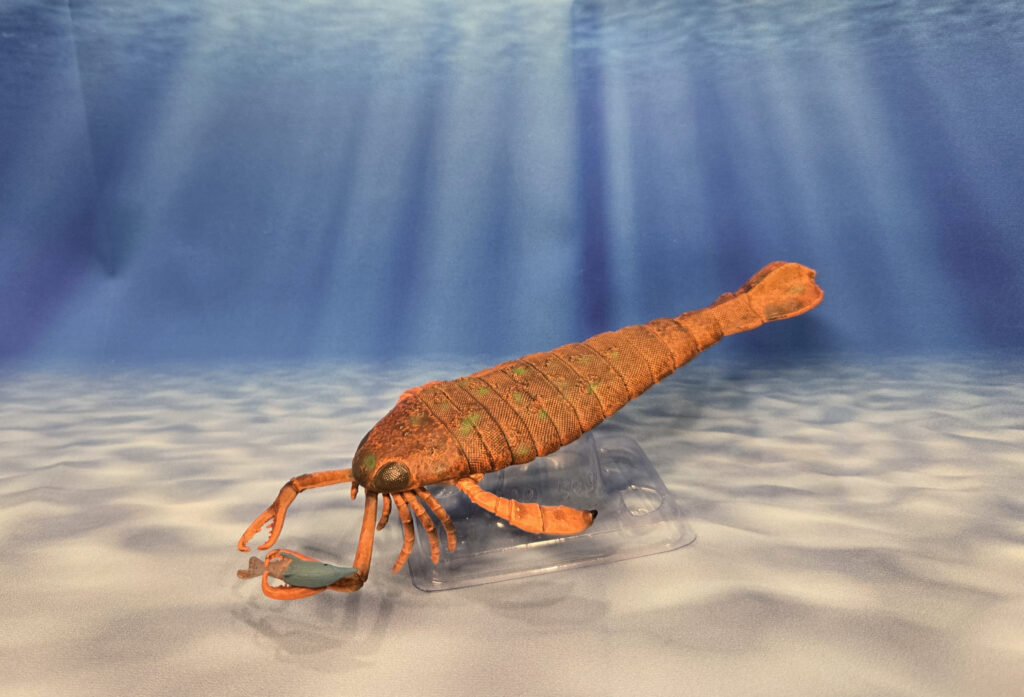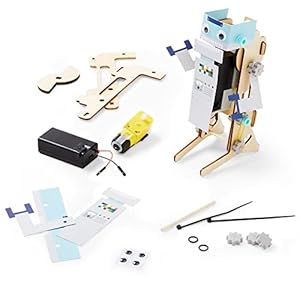
The genus Jaekelopterus contains two species from the Early Devonian; fossils of J. rhenaniae were originally discovered in the Rhineland of Western Germany while those of J. howellii were originally discovered in Wyoming, USA. Jaekelopterus rhenaniae is not only the largest eurypterid, it is the largest known arthropod…EVER! Using a chelicera (claw) as a metric, J. rhenaniae was estimated as reaching 2.3-2.6 meters in length! Jaekelopterus howellii was smaller at around 80 centimeters. Jaekelopterus was believed to be an active, visual predator in shallow brackish to freshwater habitats, such as estuaries and along the mouths of large rivers. This year CollectA introduced is to Jaekelopterus in their Prehistoric World collection. To my knowledge this is the first figure of this genus, at least when it comes to broadly commercially-available, well-known manufacturers in the industry (i.e., I am not including 3D prints, game pieces, personal commissions, etc.). CollectA specifically marketed their figure as J. rhenaniae, and based on claw morphology that appears to be accurate.



Excluding appendages, the CollectA Jaekelopterus has a body length of 12.5 cm, which comes to a scale of 1:18.4-1:20.8 based on the range above.


By all measures I could readily come up with, the sculpt is pretty accurate, everything from the shape of the pretelson (terminal abdominal appendage), to the paired ocelli (simple eyes), to the dentation of the claws. The dorsal surface of the main body, with the exception of the prosoma and pretelson, has a cross-hatch like texture to it, as do the eyes.

The base color is an orange-brown, darker dorsally than ventrally, with infuscations along joints and at the terminus of some appendages. There are some scattered green patches on the dorsum; I assume these are intended to represent patches of an alga growing on the animal’s exoskeleton, akin to algal growth seen on extant animals such as sea turtles.

One thing of special note, which created quite the buzz on the Dino Toy Forum, was the presence of a pteraspid fish permanently affixed within the animal’s left claw. Fossils from Utah of the poraspid fish Lechriaspis patula have been found with scar marks suggesting predation by J. howellii; this may have been the influence for depictions of Jaekelopterus with fish prey, including today’s figure. The fish is blue and silver, with some paint carrying over from the claw (probably hard to avoid at this size).


I am an arthropod specialist, so I am a little biased here, but I think it goes without saying that CollectA’s Jaekelopterus comes highly recommended to collectors of interesting taxa. CollectA has been producing high-quality prehistoric invertebrates since 2020 (ok, one minor hiccup being the 2023 Anomalocaris), and this Jaekelopterus continues the trend.

Disclaimer: links to Ebay and Amazon on the DinoToyBlog are affiliate links, so we make a small commission if you use them. Thanks for supporting us!
Trending Products










